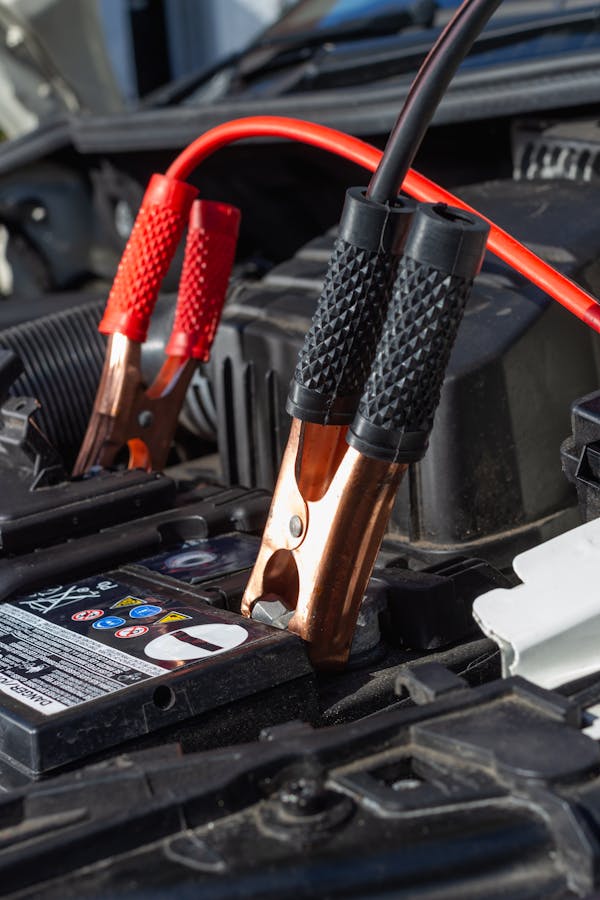Your vehicle’s battery does more than just start your engine; it powers your lights, dome and other electrical accessories. A dimmer light or an odd odor may indicate the battery is nearing the end of its life and should be replaced.
Proper car battery maintenance extends its lifespan and prevents unnecessary replacement costs. Regularly inspecting the battery, cleaning the terminals and charging it are all easy things you can do to keep your car dependable.
Check for Corrosion
If your battery terminals are corroded, you may not be able to start the car. Corrosion occurs when hydrogen and sulfuric acid gases that build up inside your battery are exposed to copper or steel parts (such as the clamps used to connect the positive and negative leads).
Over time, these metal parts react with each other to form a white, greenish, or blue powdery substance called anhydrous copper sulfate. It’s a poor conductor of electricity and makes the connection between your battery and your vehicle’s electrical system less effective.
The best way to spot corrosion is to pop the hood and inspect the battery terminals and metal parts. If you see a white power caked around the terminals, it’s probably corrosion. Clean it with a mixture of baking soda and water. Make sure not to get the mixture inside the raised vent caps or holes in the top of the battery case. Lastly, check the cables to see if they’re worn or frayed.
Turn Off Electronics
Car batteries not only start your car, they also send power to a number of accessories and electronics when the engine is running. Leaving headlights on or electronic devices plugged in can drain the battery and shorten its lifespan. To avoid this, double check to make sure everything is off before leaving the vehicle.

If you’re unable to drive your car regularly, consider investing in a battery maintainer that can help keep the charge at an optimal level when the vehicle is parked for extended periods of time. If you decide to handle your battery yourself, wear gloves and eye protection since it contains acid.
Lastly, be sure to clean the battery tray and keep it secure, especially if it’s been in the sun or freezing temperatures. This will minimize the likelihood of corrosion and loose connections that can drain a battery or prevent it from starting at all.
Clean the Battery Terminals
A dirty battery terminal can hinder the flow of electricity from the battery to the car’s electrical system. Cleaning the terminals is relatively easy and can be done with household materials.
Before beginning, make sure to wear safety glasses and gloves. The sulphuric acid from the battery can burn you and is toxic. Always disconnect the black, negative cable first.
You can remove corrosion from the battery terminals with a wire brush and a 1:1 solution of baking soda and water. Scrub the battery terminals with the brush and wipe them down with a damp rag.
Once the battery is clean, apply a light coat of petroleum jelly to the terminal clamps (do not over do this). The jelly will act as a barrier between the metals and prevent acid from seeping through the connection.
You can also purchase felt battery washers that are chemically treated to help absorb the sulphuric acid vapor before it gets to the terminal. These are easy to install and can significantly reduce terminal corrosion over time.
Recharge the Battery
Due to COVID-19 lockdowns and restrictions, many car owners were forced to park their cars for long periods of time. This drained the battery, leading to premature failure. This can be prevented by performing simple maintenance on the battery.
Most modern absorbent glass mat (AGM) or lithium ion batteries are sealed and require very little in the way of maintenance. However, traditional flooded lead-acid batteries need to be recharged on a regular basis. This can be done by taking the vehicle out for a quick drive or plugging it into a quality voltage maintainer.
Cleaning the terminals with a mixture of water and baking soda on a regular basis helps to reduce corrosion and keep the battery clean. In addition, keeping the battery charged by driving it often and turning off functions that draw power when the engine isn’t running can help extend its life. In addition, having a good battery tester can help determine when the battery is nearing the end of its lifespan and may need to be replaced.
